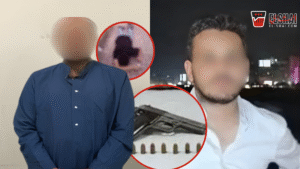A shocking incident in Egypt raises urgent questions about ride-hailing safety. An Uber passenger reports driver after he smoked drugs while speeding, nearly causing a deadly crash.
The Incident
A passenger reported a terrifying experience when his Uber driver lit what looked like a joint while driving at 120 km/h.
The driver began losing consciousness until the passenger had to pull the key from the ignition to stop a potential disaster.
According to the passenger, if he hadn’t intervened, the car could have flipped.
He raised concerns about what could happen if the rider had been a family or a woman alone in the back seat.
And what seems to be in the video, the driver tried to injure the passenger somehow.
But he was extremely under the influence of drugs and couldn’t even stand properly.
The Driver’s Profile
The driver, Abdullah, had only been working with Uber for one month.
Yet, he was already marked as an “Uber Pro” driver at Gold Level.
This raises serious questions about how Uber awards its badges, and whether those labels truly reflect a driver’s safety or reliability.

Uber’s Policy vs. Reality
Uber says all drivers go through criminal background checks, regular drug tests, rider safety training, and vehicle inspections.
In September 2024, they also introduced new safety features to improve driver verification and fight fraud.
But the question remains: are these measures enough?
In this case, cameras would help the situation. Monitoring each and every ride should be implemented by now.
Why More Tests Are Needed
‘Regular’ tests can’t detect everything. A driver may pass at first but use drugs later. Without ongoing checks, at least once every few weeks, risky drivers slip through the cracks.
And this doesn’t apply only to Uber—drug use behind the wheel is a wider issue on Egypt’s streets. Quick and random testing for all drivers, not just ride-hailing ones, would add a stronger layer of accountability and make the roads safer for everyone.
Saying “we take safety seriously” isn’t enough anymore. We need numbers, accountability, and consequences.






